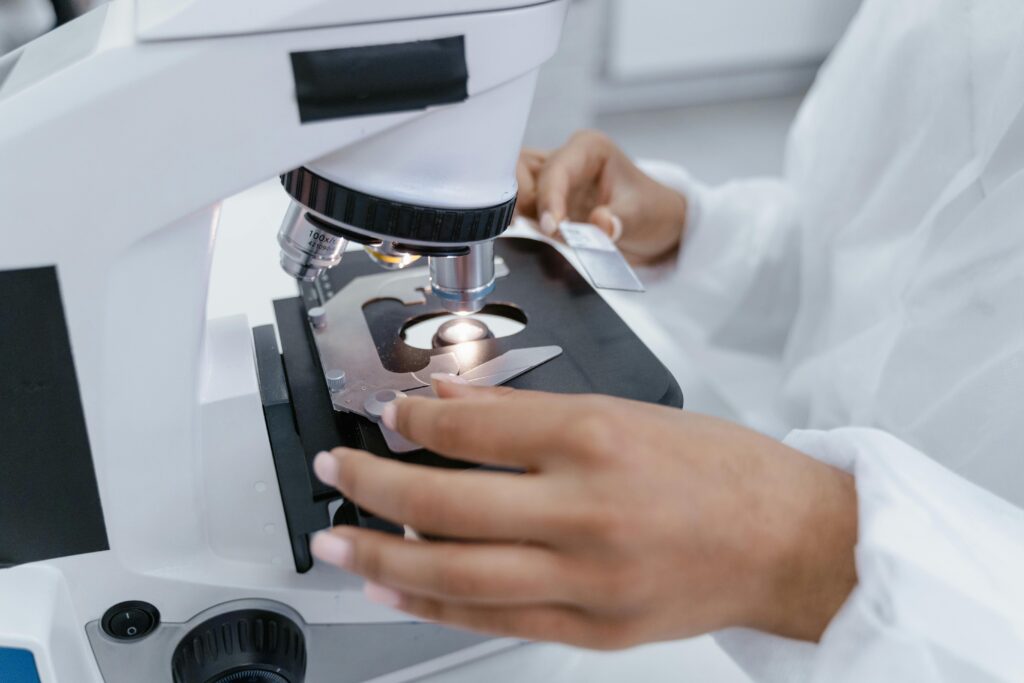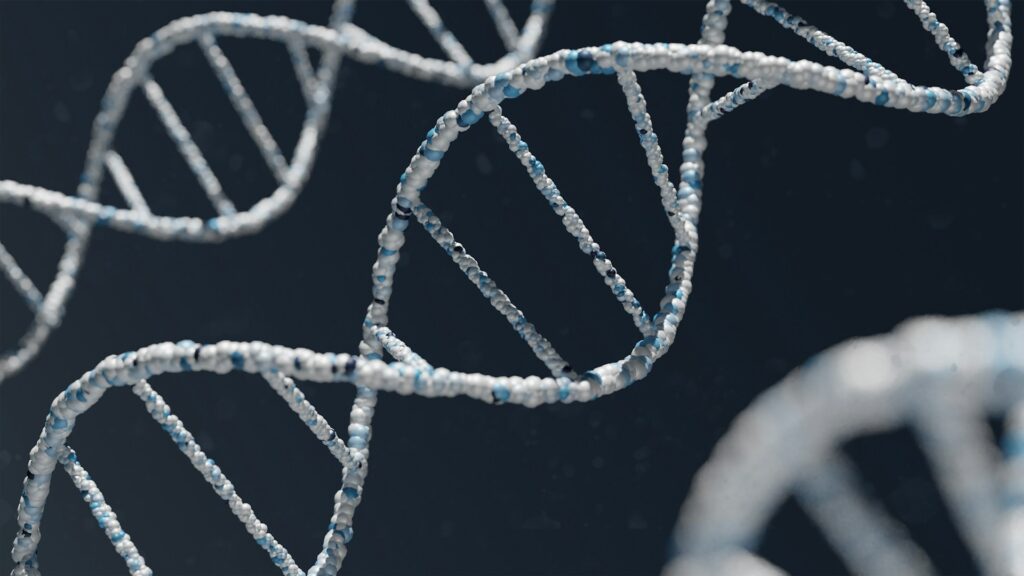It once took over 10 years and $3 billion to sequence a single human genome. Today, thanks to Next-Generation Sequencing, that same analysis can be done in just days – and often for less than the cost of an MRI.
Table of Contents
ToggleSo, What is Next Generation Sequencing?
Next-Generation Sequencing (NGS) is a high-throughput molecular technology that can decode millions of DNA fragments at once. This is different from older methods like Sanger sequencing, which only looks at one genetic region at a time. NGS lets you examine parts of the genome, or even the whole genome, in one sequencing run in a thorough and parallel way [1].
From research labs to hospital diagnostics, NGS has transformed our understanding of how genetic differences affect people and groups. NGS helps doctors find hereditary conditions, somatic mutations in cancer, and pharmacogenetic profiles that help them make personalized treatment plans [2].
Geneticists, molecular pathologists, and oncologists now regularly use NGS to diagnose rare diseases, characterize tumors at the molecular level, and figure out how likely someone is to get conditions like cardiovascular disease or neurological syndromes. This makes it a big part of precision medicine [3].
How Does NGS Works?
The fundamental concept behind NGS is that it can read many DNA sequences at once, which is called “massive parallel sequencing.” Modern sequencing platforms don’t read one DNA strand at a time. Instead, they put together millions of short DNA segments to make the whole sequence through computational assembly [4].
This method is different from Sanger sequencing, which can only process a certain number of sequences in one experiment. NGS is great for high-throughput applications because it is efficient and can be scaled up. This is especially true in clinical diagnostics, where time and resolution are very important [5].
NGS allows medical professionals to take a look at whole-exome data or comprehensive panels in just one run by sequencing multiple genes or regions at the same time. This saves time and costs while also increasing diagnostic efficiency [6].
What are the four steps of NGS?
There are 4 main steps in the NGS workflow, and each is important for turning a biological sample into genomic data that you can trust.
1. Building the Library
The first step is to get DNA out of a clinical sample, which could be blood, saliva, or a tissue biopsy, and break it up into pieces. Then, synthetic adapters are used to ligate the DNA fragments together, which makes it possible for sequencing platforms to recognize and amplify them. In multiplexed experiments, sample-specific barcodes are added so that samples can be combined [7].
2. Making Clusters
Then, each DNA molecule is copied many times to make thousands of identical copies, or clusters. Bridge amplification (Illumina-based) typically occurs on a solid surface known as a flow cell, whereas emulsion PCR (Ion Torrent or older) takes place on microscopic beads suspended in an oil-water emulsion. The goal of this step is to make the signal stronger so that it can be found correctly during sequencing [8].
3. Sequencing Step
Sequencing means figuring out the order of nucleotides in each piece of DNA. The platform used can detect changes in fluorescence, electrical current, or pH. The signal that comes out shows what base (A, T, C, or G) is added at each cycle [9].
4. Understanding the Data
Bioinformatics tools are used to align raw sequence reads to a reference genome after they are made. We identify variants such as single-nucleotide polymorphisms (SNPs), insertions/deletions (indels), and structural variations (SV: larger genomic rearrangements). Then, clinical and genomic databases are used to add notes to these, making a report that healthcare professionals or genetic advisors would comprehend [10].
What is the difference between Sanger Sequencing and NGS?
NGS possesses a number of obvious benefits over the Sanger method. Sanger sequencing can only read one DNA sequence at a time, but NGS can read millions at once, which greatly speeds up the process. NGS also picks up more types of variants, such as rare or complicated mutations that other methods with lower resolution might miss [11].
When looking at multiple genes or panels, NGS significantly cuts the cost per base. Sanger is still used to confirm certain variants, but it is no longer useful for full or exploratory testing. NGS is now the most popular way to do various clinical tests, such as diagnosing rare diseases, profiling somatic tumors, or embryonic screening [12].
Key Benefits of NGS
NGS has had numerous impacts on healthcare and research [13]:
- Broad Detection Capabilities: NGS can identify all kinds of changes, from small insertions and deletions to larger rearrangements and changes in the number of copies of a gene.
- Quick Results: Some clinical tests can be done in 24 to 72 hours, which is crucial for newborns or cancer patients. InheriNext prides itself in its turn-around-time from as short as 5-20min from VCF of WES/WGS data, or just hours from FASTQ inputs.
- Scalable and cost-effective: Multiplexing lets you look at more than one sample and gene target at once, which saves time and money in the lab.
- Wide Use: It is used in many fields, including oncology, cardiology, infectious disease, and pharmacogenetics.
- Precision Medicine Enabler: NGS makes it possible to customize treatment plans based on a patient’s unique genetic profile, which leads to better results and fewer unnecessary procedures.

Advances in NGS Technology
In the last few years, sequencing technologies have made amazing progress [14]:
- Long-read sequencing has made it possible to figure out areas of the genome that were too hard to figure out before, like repetitive sequences and structural variants.
- Ultra-high-throughput platforms can now gather data on a scale never seen before, making them good for studies of whole populations.
- Lower Costs: The cost of sequencing has dropped dramatically, and many labs can now do in the hundreds of dollars (though can still vary based on the provider and depth of sequencing) in the hundreds of dollars (though can still vary based on the provider and depth of sequencing).
- Cloud Integration: Bioinformatics platforms like InheriNext make it possible to analyze genomic data in real time and share it safely.
- AI and Machine Learning: These technologies can now automatically sort variants, filter them based on their phenotype, and even write clinical reports automatically.
These types of changes make NGS easier to use and more useful in various clinical settings.
How to use NGS in Clinical and Research Settings
NGS can be integrated into the clinical workflow in many different ways [15]:
- Sample Acquisition: Blood, saliva, or tissue is collected and processed according to approved methods to make sure the nucleic acids are still intact.
- Library Preparation and Sequencing: Depending on the clinical indication, targeted panels, exomes, or genomes are sequenced.
- Bioinformatics Pipeline: Validated software tools are used for alignment, variant calling, and annotation.
- Clinical Interpretation: Qualified professionals look at the results in light of the patient’s symptoms, family history, and phenotype.
NGS has been utilized extensively for:
- Screening hereditary cancers (e.g.: BRCA1/2 mutations linked to inherited breast and ovarian cancers, or pathogenic variants of the DNA mismatch repair genes (MMR) of Lynch syndrome associated with colorectal cancers)
- Looking into neurodevelopmental disorders
- Carrier screening in reproductive medicine
- Keeping an eye on minimal residual disease (MRD) in blood cancers
- Pharmacogenomic testing to improve how drugs work
Analyze Next Generation Sequencing Data
Getting sequence data is only half the battle; the real challenge is getting useful clinical information from it. This needs advanced computer tools and people who know how to use them.
- Data Cleaning: Getting rid of bad reads and sequencing artifacts.
- Read Mapping: Putting the reads in line with a reference genome, like GRCh38.
- Variant Calling: Using probabilistic models and quality metrics to identify real variants from sequencing noise
- Annotation and Filtering: Putting variants into groups based on how dangerous they are, how common they are in the population, and what diseases they are known to be linked to.
- Problems with interpretation: Variants of Uncertain Significance (VUS), which are variants whose clinical significance is not clear
- Pseudogenes and Homologous Regions, which can make mapping harder
- Low-Frequency Mosaic Variants, which need deep sequencing and a manual review
AI tools like InheriNext make this process easier by cutting down on the time it takes to interpret data and making it more consistent.
Final Thoughts
Where 2 tumors may look identical under a microscope, they may all but respond to treatment in completely different ways. Sequencing has helped decode their molecular fingerprint, guiding clinicians to the right therapy at the right time.
NGS has since changed genomic science from selective testing to giving us a full, real-time view of the human genome. It gives clinical teams the power to make decisions based on data instead of just gut feelings, and it lets researchers look into biological mechanisms at a level of detail that has never been seen before.
For labs, doctors, and patients, sequencing moves medicine from being reactive to being proactive and based on data. As the technology continues to evolve and advances further, more accurate and faster sequencing, will push new limits of what is possible in diagnostics and therapeutics.
REFERENCES
- Yin, Y., Butler, C., & Zhang, Q. (2021). Challenges in the application of NGS in the clinical laboratory. Human immunology, 82(11), 812–819.
- Mandlik, J. S., Patil, A. S., & Singh, S. (2024). Next-Generation Sequencing (NGS): Platforms and Applications. Journal of pharmacy & bioallied sciences, 16(Suppl 1), S41–S45.
- Kathiresan, N., Ramachandran, S., & Kulanthaivel, L. (2024). Next-Generation Sequencing to Study the DNA Interaction. Methods in molecular biology (Clifton, N.J.), 2719, 249–264.
- Morganti, S., Tarantino, P., Ferraro, E., D’Amico, P., Duso, B. A., & Curigliano, G. (2019). Next Generation Sequencing (NGS): A Revolutionary Technology in Pharmacogenomics and Personalized Medicine in Cancer. Advances in experimental medicine and biology, 1168, 9–30.
- Hussen, B. M., Abdullah, S. T., Salihi, A., Sabir, D. K., Sidiq, K. R., Rasul, M. F., Hidayat, H. J., Ghafouri-Fard, S., Taheri, M., & Jamali, E. (2022). The emerging roles of NGS in clinical oncology and personalized medicine. Pathology, research and practice, 230, 153760.
- McCombie, W. R., McPherson, J. D., & Mardis, E. R. (2019). Next-Generation Sequencing Technologies. Cold Spring Harbor perspectives in medicine, 9(11), a036798.
- Satam, H., Joshi, K., Mangrolia, U., Waghoo, S., Zaidi, G., Rawool, S., Thakare, R. P., Banday, S., Mishra, A. K., Das, G., & Malonia, S. K. (2023). Next-Generation Sequencing Technology: Current Trends and Advancements. Biology, 12(7), 997.
- Slatko, B. E., Gardner, A. F., & Ausubel, F. M. (2018). Overview of Next-Generation Sequencing Technologies. Current protocols in molecular biology, 122(1), e59.
- Cantalupo, P. G., & Pipas, J. M. (2019). Detecting viral sequences in NGS data. Current opinion in virology, 39, 41–48.
- Larson, N. B., Oberg, A. L., Adjei, A. A., & Wang, L. (2023). A Clinician’s Guide to Bioinformatics for Next-Generation Sequencing. Journal of thoracic oncology : official publication of the International Association for the Study of Lung Cancer, 18(2), 143–157.
- Wajda, A., Sivitskaya, L., & Paradowska-Gorycka, A. (2021). Application of NGS Technology in Understanding the Pathology of Autoimmune Diseases. Journal of clinical medicine, 10(15), 3334.
- Fernandez-Marmiesse, A., Gouveia, S., & Couce, M. L. (2018). NGS Technologies as a Turning Point in Rare Disease Research , Diagnosis and Treatment. Current medicinal chemistry, 25(3), 404–432.
- Wensel, C. R., Pluznick, J. L., Salzberg, S. L., & Sears, C. L. (2022). Next-generation sequencing: insights to advance clinical investigations of the microbiome. The Journal of clinical investigation, 132(7), e154944.
- Cappello, F., Angerilli, V., Munari, G., Ceccon, C., Sabbadin, M., Pagni, F., Fusco, N., Malapelle, U., & Fassan, M. (2022). FFPE-Based NGS Approaches into Clinical Practice: The Limits of Glory from a Pathologist Viewpoint. Journal of personalized medicine, 12(5), 750.
- Rodriguez, R., & Krishnan, Y. (2023). The chemistry of next-generation sequencing. Nature biotechnology, 41(12), 1709–1715.


